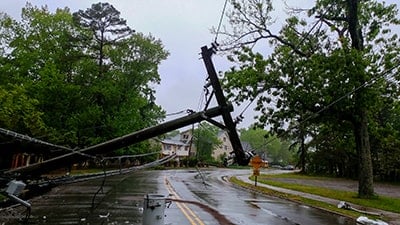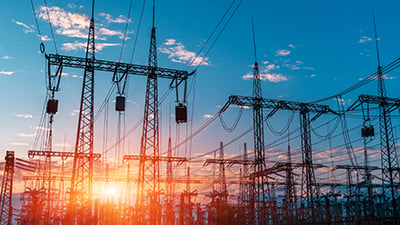Transformer Shortage Threatens Grid
Recent supply chain challenges have hit everything from baby formula to SUVs to Sriracha hot sauce. Now electrical transformers are increasingly difficult to get. Production delays and higher prices are the current reality for many shoppers, especially those of you in the market for transformers. That includes transformers mounted on poles and pads, as well as larger substation transformers.
“There are shortages [of transformers] all over, in all four corners of the U.S.,” says Corry Marshall, Senior Director for Government Relations at the American Public Power Association, in an interview with E&E News. What was a three-month wait for a transformer in 2018 “has grown closer to 18 months, to almost two years.”
E&E News reports that U.S. utilities rely on foreign transformer manufacturers, and that supply chain has been impaired by several factors related to the Covid-19 pandemic. Manufacturers of new transformers—overseas and in the U.S.—report troubles hiring the skilled workers they need to fill orders. A shortage of workers in transportation and logistics complicates the manufacturing problem.
Storm Damage Increases Demand
The need for transformers remains high. Hurricane Ian hit Florida in September 2022 as a Category 4 storm, causing enormous damage to the state and its electrical infrastructure.
“The storm, together with a critical supply chain shortage, has depleted the equipment reserves of many utilities that lack adequate distribution transformers and other necessary grid equipment,” wrote Joy Ditto, president and CEO of the American Public Power Association, in a letter to The Hill. “It is unclear if we have the transformers to rebuild after another significant weather event this year—a situation that is untenable for a country that requires electricity for everything we do.”

A year earlier, Hurricane Ida struck Louisiana and Mississippi, causing extensive damage, including the destruction of nearly 6,000 transformers, mostly pole-mount units that served nearly 1,000,000 residents.
Building Boom Grows Demand
A post-Covid building boom increased demand for transformers of all sizes throughout 2022. New housing starts grew rapidly from their mid-2020 pandemic low, though building permits have begun to slow with recent interest rates hikes. Still, single-family, multi-family, and apartment building has been strong, and those new residences need electricity.
The Jefferson County (Washington) Public Utility District reports that lead times for orders of pad-mounted transformers have increased to at least 52 weeks, up from 6 weeks in 2020. Price increases accompany the production delays. The PUD reports to its members that pricing for a 25 kVA pad-mounted transformer rose nearly 400% from 2020 per-unit pricing, and 50 kVA unit pricing jumped 900% since 2020.
New Braunfels, Texas, power utilities recently alerted builders that the transformer shortage condition “constitutes building at your own risk, as supply chain conditions may not improve in the near future and could even worsen. Any delay in receiving electric service should be shared upfront with potential home buyers to help manage expectations regarding when a house will be ready for occupancy.” The utility reports that 75 kVA transformers are its primary concern, but it is also experiencing supply problems with wood utility poles and 1000 MCM feeder wire.
White House Action
The Biden Administration has taken action to help alleviate the production backlog. In June 2022, President Biden used Section 303 of the Defense Production Act in an attempt to get more transformers built. His memo stated:

- Transformers and electric power grid components are industrial resources, materials, or critical technology items essential to the national defense;
- Without Presidential action under section 303 of the Act, United States industry cannot reasonably be expected to provide the capability for the needed industrial resource, material, or critical technology item in a timely manner; and
- Purchases, purchase commitments, or other action pursuant to section 303 of the Act are the most cost effective, expedient, and practical alternative method for meeting the need.
The President called on manufacturers to “expand the domestic production capability for transformers and electric power grid components (as it) is necessary to avert an industrial resource or critical technology item shortfall that would severely impair national defense capability.”
Transformers are only one target of the President’s use of the Defense Production Act. He is also hoping to spur production of solar technology, heat pumps, and other items. Even with a presidential action, acquiring the necessary grain-oriented electrical steel for a transformer core is a growing challenge. This grain-oriented steel is used in other products, including electric and hybrid cars, and its supply has struggled to meet demand.
Bloomberg News states, “The transformer shortage is a potential stumbling block for President Joe Biden’s push to slash transportation emissions via a nationwide network of EV chargers. The US recently launched a $5 billion effort to do so.”
Solution On Site
"We were faced with a significant problem,” Adam Desrosiers, Vice President of Electric Operations at Central Maine Power told local news reporters, “and our employees put their heads together and they came up with a solution." Central Maine Power was able to purchase small transformers but no pad-mount enclosures, so they made their own out of wood and fiberglass. He called this “Mainer ingenuity.”
Desrosiers also found that CMP can have hundreds of its older transformers refurbished or remanufactured. Your existing transformer could solve the problems caused by delays in new product manufacturing.

.png?width=295&height=96&name=Untitled%20design%20(8).png)

